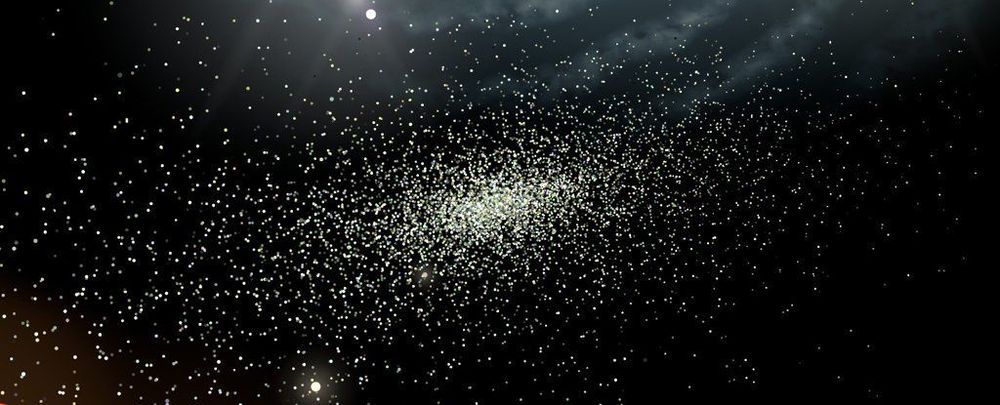Jul 30, 2020
Sleep tech allows scientists to influence dreams
Posted by Brent Ellman in category: wearables
Researchers in Boston have designed a sleep wearable called Dormio to explore how to improve creativity in our sleep.
Researchers in Boston have designed a sleep wearable called Dormio to explore how to improve creativity in our sleep.
According to the University of Minnesota trial data supports dexamethasone over Hydroxychloroquine:
Data from a large randomized controlled trial in the United Kingdom showing a benefit from use of the steroid dexamethasone in hospitalized COVID-19 patients was released today in the New England Journal of Medicine (NEJM), while two more studies show no benefit for the malaria drug hydroxychloroquine.
The NEJM data, which were originally reported in a press release in mid-June by the chief investigators of the RECOVERY (Randomized Evaluation of COVID-19 Therapy) trial after an interim analysis, show that in patients needing mechanical ventilation, dexamethasone reduced deaths by 36% compared with usual care. In patients receiving oxygen, the incidence of death was 18% lower for patients on dexamethasone.
Continue reading “Trial data support dexamethasone, but not hydroxychloroquine, for COVID-19” »
To learn more about the science behind a dog’s ability to find its way home, researchers tracked the 27 hunting dogs representing 10 breeds as they roamed the woods.
The AI Foundation, a startup developing technology that powers digital personas, has raised $17 million in venture capital.
The Honeywell UV Cabin System is a portable ultraviolet-c light (UVC) system that, when properly applied, reduces certain viruses and bacteria on airplane cabin surfaces.
This efficient and cost-effective system can cover an entire mid-sized airline cabin in less than 10 minutes. Roughly the size of a beverage cart, it can easily be transferred on and off the aircraft to maximize fleet efficiency. The extendable arms deliver treatments to both sides of an aisle at once, minimizing aircraft downtime between flights.
O,.o!
Imagine looking out your window to see an eerie green glow resonating from your neighbor’s shed. Or seeing government trucks being loaded with barrels marked radioactive by men dressed in hazmat suits outside your home.
The residents of Golf Manor, Michigan, don’t have to imagine it, because in 1995, a young teenage boy built a nuclear breeder reactor in his mother’s potting shed, an idea he came up with while working on his Atomic Energy merit badge in attempt to earn Eagle Scout status.
Continue reading “That time a Boy Scout built a nuclear reactor out of common household items” »

Astronomers have discovered a mysterious stream of ancient stars at the distant edges of the galaxy: a strange stellar breed so unlike any we’ve seen before, they may very well be the last of their kind.
This unusual collection of stars – called the ‘Phoenix stream’, after the Phoenix constellation in which they are visible – is what’s known as a stellar stream: an elongated chain of stars that used to exist in a spherical form, known as a globular cluster.
Continue reading “Astronomers Find Stream of Early Universe Stars, Torn Apart” »
Users Guide
Ultimately, the MIT engineers hope that their giant atoms lead to a simpler, enhanced form of quantum computers.
“This allows us to experimentally probe a novel regime of physics that is difficult to access with natural atoms,” MIT engineer Bharath Kannan said in a press release. “The effects of the giant atom are extremely clean and easy to observe and understand.”
Nearly 200 covid-19 vaccines are in development and some three dozen are at various stages of human testing. But in what appears to be the first “citizen science” vaccine initiative, Estep and at least 20 other researchers, technologists, or science enthusiasts, many connected to Harvard University and MIT, have volunteered as lab rats for a do-it-yourself inoculation against the coronavirus. They say it’s their only chance to become immune without waiting a year or more for a vaccine to be formally approved.
Preston Estep was alone in a borrowed laboratory, somewhere in Boston. No big company, no board meetings, no billion-dollar payout from Operation Warp Speed, the US government’s covid-19 vaccine funding program. No animal data. No ethics approval.
What he did have: ingredients for a vaccine. And one willing volunteer.
Scientists have found that a physical property called ‘quantum negativity’ can be used to take more precise measurements of everything from molecular distances to gravitational waves.
The researchers, from the University of Cambridge, Harvard and MIT, have shown that quantum particles can carry an unlimited amount of information about things they have interacted with. The results, reported in the journal Nature Communications, could enable far more precise measurements and power new technologies, such as super-precise microscopes and quantum computers.
Metrology is the science of estimations and measurements. If you weighed yourself this morning, you’ve done metrology. In the same way as quantum computing is expected to revolutionize the way complicated calculations are done, quantum metrology, using the strange behavior of subatomic particles, may revolutionize the way we measure things.
